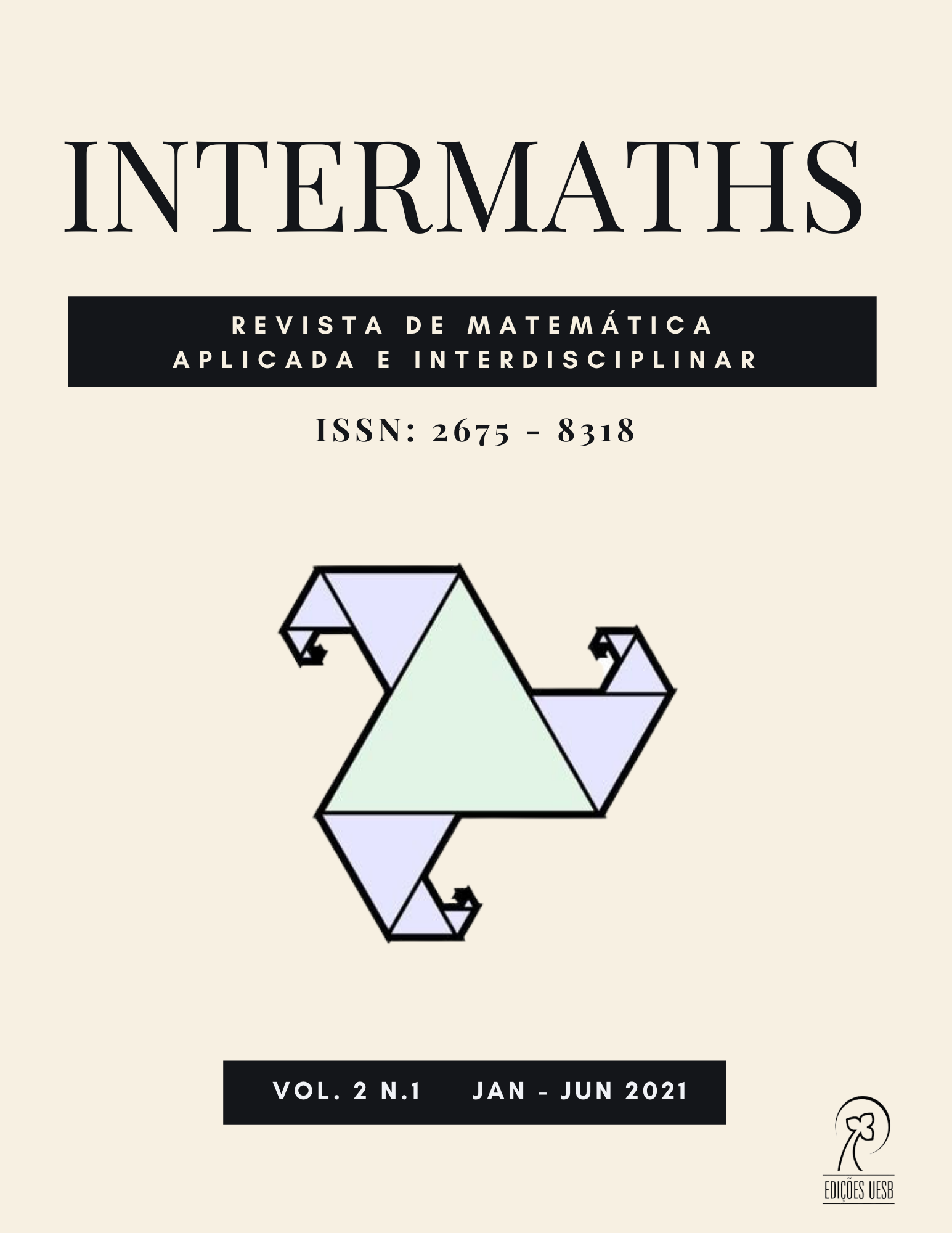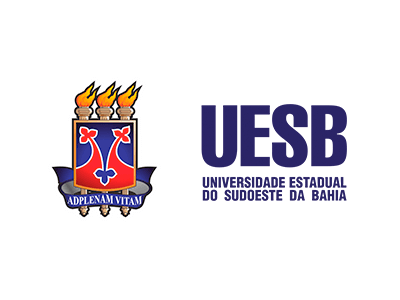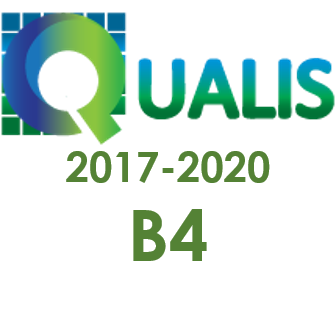Extensão de Galois GF(2^6) Aplicada na Modelagem do Código Genético
DOI:
https://doi.org/10.22481/intermaths.v2i1.8412Palavras-chave:
Álgebra, DNA, PolinômiosResumo
Para a comunidade científica, um dos maiores desafios é analisar a existência de uma estrutura matemática relacionada com o DNA. Muitas pesquisas vêm sendo realizadas envolvendo o código genético, entre outros fenômenos biológicos, utilizandoa Matemática para contribuir na análise e descrição desses conceitos teóricos. Os códons são formados por uma trinca de bases nitrogenadas, com 64 combinações possíveis. As bases nitrogenadas são a adenina, citosina, guanina e timina/uracila, que são representa das pelas letras A,C,GeT/U, respectivamente, e representamo alfabeto do DNA e por meio da bijeção desse alfabeto com anel Z_4 = {0,1,2,3} é possível obter 24 permutações, que podem ser divididas em 3 rotulamentos (A, B e C). O objetivo deste trabalho é apresentar a utilização de elementos de álgebra na modelagem do código genético. Serão apresentadas uma representação polinomial, vetorial e por potência para a estrutura do código genético, onde para cada códon foi associado um elemento da extensão GF(2^6), uma vez que vemos que existe uma associação um-a-um dos códons do código genético com um elemento da extensão de Galois. Foi obtida a caracterização algébrica para os rotulamentosA, B e C do código genético, por meio dessas representações mencionadas anteriormente, as quais poderão ser utilizadas em futuros estudos envolvendo a análise do código genético.
Downloads
Metrics
Referências
L. C. B. D. Faria, “Existência de códigos corretores de erros e protocolos de comunicação em sequência de DNA”, Doutorado em Engenharia Elétrica, Universidade Estadual de Campinas, Faculdade de Engenharia Elétrica, Campinas, jul. 2011.
A. S. L. Rocha, “Modelo de sistema de comunicação digital para o mecanismo de importação de proteínas mitocondriais através de códigos corretores de erros”, Doutorado em Engenharia Elétrica, Universidade Estadual de Campinas, Faculdade de Engenharia Elétrica, Campinas, fev. 2010.
M. E. D. Gonzalez, “Modelagem da síntese de proteínas e sua estrutura organizacional através de códigos corretores de erros”, Doutorado em Engenharia Elétrica, Universidade Estadual de Campinas, Faculdade de Engenharia Elétrica, Campinas, fev. 2017.
B. P. Rocha andA. J. de Oliveira, “Aplicações de estruturas algébricas na conexão entre sistemas de comunicação padrão e genética”, Sigmae, vol. 6, no. 2, pp. 1-14, 2017.
R. S. Fernandes and A. J. de Oliveira, “Caracterização das propriedades dos aminoácidos por meio do diagrama de Hasse associado ao rotulamento A do código genético”, Brazilian Electronic Journal of Mathematics, vol. 2, n o . 4, pp. 81-100, 2021.
R. Sánchez, E. Morgado, and R. Grau, “Gene algebra from a genetic code algebraic structure”, Journal of Mathematical Biology, vol. 51, n o . 4, pp. 431-457, 2005.
B. Alberts, A. Johnson, J. Lewis, M. Raff, K. Roberts and P. Walter, Biologia Molecular da Célula. 5 ed. Porto Alegre: ArtMed, 2010.
H. H. Domingues and G. Iezzi, Álgebra Moderna. 4 ed. São Paulo: Atual, 2003.
A. J. F. Griffiths, S. R. Wessler, R. C. Lewontin, W. M. Gelbart, D. T. Suzuki, and J. H. Miller,
Introdução à genética. Rio de Janeiro: Guanabara Koogan, 2006.
A. Hefez and C. S. Fernandez, Introdução à Álgebra Linear. 1 ed. Rio de Janeiro: SBM, 2012.
J. Hib and E. M. F. Robertis, Bases da biologia celular e molecular. Rio de Janeiro: Guanabara Koogan, 2006.
S. Lin and J. D. Costelo Jr., Error Control Coding: Fundamentals and Applications. São Paulo: Englewood Cliffs: Prentice Hall, 1983.
A. J. de Oliveira, “Análise algébrica dos rotulamentos associados ao mapeamento do código genético”, Mestrado em Engenharia Elétrica, Universidade Estadual de Campinas, Faculdade de Engenharia Elétrica, Campinas, fev. 2012.
Downloads
Publicado
Como Citar
Edição
Seção
Licença
Copyright (c) 2021 INTERMATHS

Este trabalho está licenciado sob uma licença Creative Commons Attribution 4.0 International License.
 All content of Revista INTERMATHS/Journal INTERMATHS is licensed under a Creative Commons - Atribuição 4.0 Internacional (CC-BY 4.0).
All content of Revista INTERMATHS/Journal INTERMATHS is licensed under a Creative Commons - Atribuição 4.0 Internacional (CC-BY 4.0).







